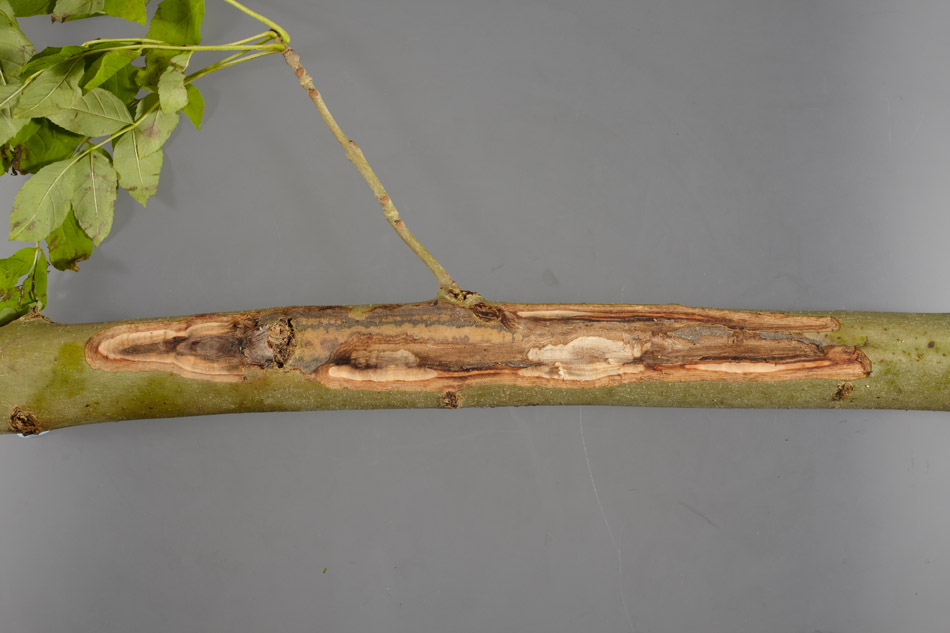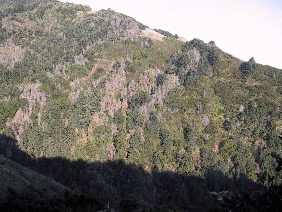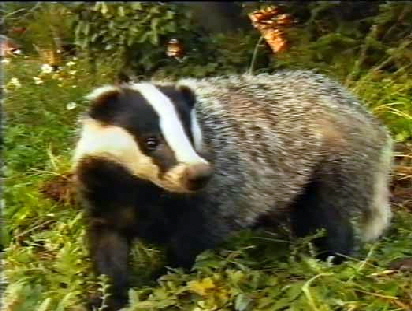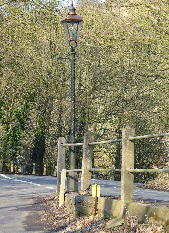|

 Paul B. Anthony, Director of AgroTourism Limited, graduate Chartered Scientist [microbiology], Fellow of the Institute of Directors, Fellow of the Institute of Biomedical Scientists and Licensed Real Estate Broker, Commercial Specialist (State of New York) offering the highest quality services available today. Since 1973, we have provided superior service to our customers and have assisted them in achieving their goals. Our years of experience and commitment to excellence have earned us the reputation as the best international consultants in the area. Paul B. Anthony, Director of AgroTourism Limited, graduate Chartered Scientist [microbiology], Fellow of the Institute of Directors, Fellow of the Institute of Biomedical Scientists and Licensed Real Estate Broker, Commercial Specialist (State of New York) offering the highest quality services available today. Since 1973, we have provided superior service to our customers and have assisted them in achieving their goals. Our years of experience and commitment to excellence have earned us the reputation as the best international consultants in the area.
Now, retired and living in Europe. What this really means is that I can now pick and choose assignment. It is a case of have car will travel and can act in a variety of ways (provided that they are legal) such as, special courier, inspect property, evaluation of a geographical area as to suitability for a specific project, physically authenticate address of service providers including banks, visit rural projects in remote areas not served by other brokers and project that are not commercial viable for a fully operational brokerage to service.
Assisted by:
Elizabeth C. Anthony, Director AgroTourism Limited, Graduate Nurse (Norland), Interior Designer, (La Salle University, Chicago), Licensed Real Estate Sales Person, Residential Specialist (State of New York).
Whether you need a total services package that includes property management services, or an specific service, we have what  you need at a reasonable price. At AgroTourism Limited, our goal is to provide you with courteous, expedient, professional service of the highest calibre. you need at a reasonable price. At AgroTourism Limited, our goal is to provide you with courteous, expedient, professional service of the highest calibre.
Browse our Web site for more information about AgroTourism Limited. If you have any questions or would like to speak with a AgroTourism Limited representative regarding our services, please e-mail us at agrotourism@xystus54g.com or call us at 01905 424719 or mobile 07924 520 973.
At AgroTourism Limited, the client always comes first.
News Flash FRANCE
If you are spending time in France this year you can anticipate some of the worst food in Europe. The once proud French tradition of gourmet food has long since past. When I first visited France in the 1950s it was well nigh impossible to find a bad meal. Now the French are coming to England to experience the good food well prepared from the raw materials. If you are in France you may wish to eat, as 54% of French people do, at a fast food restaurants or sandwich shops - a least you know what you are getting . On the other hand should you be very brave and venture into a restaurant be warned that 70% of all restaurant food is ready food that has probable been bought in the local supermarket and microwave or cooked in a bag in the restaurant. Ask questions as to how the food is source and prepared before committing to any eatery. You can still expect to pay chef priced for a microwaved ready meal! 96% of all French people are really tired of this rip off that they are asking the French government of pass a law requiring restaurant to state on the menu whether the food is freshly prepared or a ready meal. No sign of any action from the French government but perhaps one day they will act to save their restaurant industry from world ridicule.
##################################################################################
Bells for Alamein & Memories of Peel - Poems are now on the NEWS page click here
==================================================================================
My peripatetic page - Click any will take you to the NEWS page:
PASS THE BUTTER PLEASE - IT IS GOOD FOR YOU OR WHAT DAIRY FARMERS ALREADY KNOW
COWS EXPLAIN THE WORLD ECONOMY
ICE HOCKEY CURES ALL THAT AILS AMERICA
==================================================================================
Chalara dieback of ash (Chalara fraxinea)
Hymenoscyphus pseudoalbidus is an Ascomycete fungus that causes ash dieback, a chronic fungal disease of ash trees in Europe characterised by leaf loss and crown dieback in infected trees. The fungus was first scientifically described in 2006 under the name Chalara fraxinea. Four years later it was discovered that Chalara fraxinea was only the asexual (anamorphic) stage of a fungus that was subsequently named Hymenoscyphus pseudoalbidus.
Trees now believed to have been infected with this pathogen were reported dying in large numbers in Poland in 1992, and by the mid 1990s it was also found in Lithuania, Latvia and Estonia. However, it was 2006 before the fungus’s asexual stage, Chalara fraxinea, was first described by scientists, and 2010 before its sexual stage, Hymenoscyphus pseudoalbidus, was described. By 2008 the disease was also discovered in Scandinavia, the Czech Republic, Slovenia, Germany, Austria and Switzerland. By 2012 it had spread to Belgium, France, Hungary, Italy, the Netherlands, Romania, Russia, Britain and Ireland.
The disease was first observed in Denmark in 2002, and had spread to the whole country by 2005. In 2009 it was estimated that 50 per cent of Denmark's ash trees were damaged by crown-dieback, and a 2010 estimate stated that 60-90% of ash trees in Denmark were affected and may eventually disappear. The disease was first reported in Sweden in 2003. A survey conducted in Götaland in 2009 found that more than 50% of the trees had noticeable thinning and 25% were severely injured.
So far the fungus has mainly affected the European ash (Fraxinus excelsior) and its cultivars, but it is also known to attack the Narrow-leafed ash (Fraxinus angustifolia). The Manna ash (Fraxinus ornus) is also a known host, although it is less susceptible than the other European ash species. Experiments in Estonia have shown that several North American ash species are susceptible, especially the Black ash (Fraxinus nigra), and to a lesser extent the Green ash (Fraxinus pennsylvanica). The White ash (Fraxinus americana) and the Asian species known as Manchurian ash (Fraxinus mandschurica) showed only minor symptoms in the study.
Initially, small necrotic spots (without exudate) appear on stems and branches. These necrotic lesions then enlarge resulting in wilting, dieback of branches and particularly in the death of the top of the crown. The disease is often chronic but can be lethal. It is particularly destructive of young ash plants, killing them within one growing season of symptoms becoming visible. Older trees can survive initial attacks, but tend to succumb eventually after several seasons of infection.

 |
 |
|
Wilting of leaves caused by necrosis of the rachis
|
|
|
|

The disease can be confused with another disorder known as "ash dieback" which has been known for many years and is widespread in the UK. The disorder causes crown dieback in mature trees. The cause is unknown but it is thought to be a mainly physical rather than biological condition.
Management
There are currently no effective strategies for managing the disease, and most countries which have tried to control its spread have failed. The removal of trees in infected areas has little effect as the fungus lives and grows on leaf litter on the forest floor.Research at the Swedish University of Agricultural Sciences suggests that the deliberate destruction of trees in an infected area can be counterproductive as it destroys the few resistant trees alongside the dying ones. One approach to managing the disease may be to take branches from resistant trees and graft them to rootstock to produce seeds of resistant trees in a controlled environment. A Lithuanian trial searching for disease-resistance resulted in the selection of fifty disease-resistant trees for the establishment of breeding populations of European ash in different provinces of Lithuania. However, the process of restoring the ash tree population across Europe with resistant trees is likely to take decades.
United Kingdom
The fungus was first found in Britain during February 2012 at sites that had received saplings from nurseries in the previous five years. A ban on imports of ash from other European countries was imposed in October 2012 after infected trees were found in established woodland. There are fears that the ban might not be sufficient to stop the progression of the disease and that a large proportion of the 80 million ash trees in the UK could become infected. On 29 October, Environment minister David Heath confirmed that 100,000 nursery trees and saplings had already been destroyed. Heath denied opposition suggestions that delay in responding to the disease had been caused by a 30 per cent cut in the Forestry Commission's budget. The government also banned ash imports but experts described their efforts as "too little too late".
The UK Government emergency committee Cobra met on 2 November to discuss the crisis. A survey of Scottish trees started in November 2012. DEFRA which is facing legal action over allegations that it was too slow to block imports stated that the increase in cases was due to better reporting. The Forestry Commission has produced guidance and requested people report possible cases. A free mobile phone application, Ashtag, is available to help report and identify cases. Developed by the University of East Anglia it will help conservationists target infected areas. Comparisons have been made to the outbreak of Dutch elm disease in the 1960s and 1970s.
On 9 November 2012 the United Kingdom Government unveiled its strategy. Environment Secretary Owen Paterson announced that it was now acknowledged that the disease was here to stay in the UK and that the focus would now be on slowing the spread of the disease. Young and newly planted trees with the disease would be destroyed; however, mature trees would not be removed because of the implications for wildlife that depend on the trees for their natural habitat. The strategy unveiled by Mr Paterson included:
- Reducing the rate of spread of the disease
- Developing resistance to the disease in the native UK ash tree population
- Encouraging the public and landowners to help monitor trees for signs of ash dieback.
Copyright UK Crown, This article has been edited by PBA under Open Government Licence by authority of The Controller of Her Majesty's Stationery Office from whom the full article may be purchased.
Sudden Oak Death

In America it is called Sudden Oak Death in England and the EU Phytophthora ramorum or P. kernoviae. What ever the name it has and is likely to cause significant damage to oak and other trees. The disease was first identified in the US in 1995 and the EU in 2002. In the EU the fungus appears to be a more virulent variant of the fungus and has been named P. kernoviae after were the disease was first identified (Cornwall - Kernow in the Cornish language]. At present in England the disease appears to be confined to Cornwall and South Wales. Outbreaks of the disease have been reported throughout Northern Europe.
The disease is fatal to oak trees and infected trees die within a year. Other species in which the disease is usually fatal are redwood, sweet chestnut, horse chestnut, beach, magnolia and eucalyptus. In England rhododendron and viburnum and highly susceptible to Phytophthora but does not kill the plant and acts as a reservoir for the fungus.
If the disease becomes universally established in the US and EU the economic consequences could be devastating. Farmer and hikers should be aware of the disease and report suspect trees to DEFRA. Accurate diagnosis can only be made in a laboratory. It is not a legal requirement but ramblers in know infected areas are urged to wash and disinfect their shoes and vehicles before leaving travelling to other parts of the country. The right to roam does not carry a right to destroy! DEFRA must provide free wash points. DEFRA have produced a poster that can be downloaded showing how to recognise diseased plants and trees
.
Common Ragwort
Common Ragwort (Senecio jacobaea). Its that season again. A native plant but is poisonous to horses and some other animals. DEFRA has a website with instructions as to how best to control the plant. There is no question of the complete eradication of this plant but control is essential. Well worth reading are DEFRAs recommendations
Meet the Eurasian Badger (Meles meles) - Good guy or bad?
 Badgers are nocturnal mammals. They live in extensive underground earth works called setts. The badger weighs less in southern, warmer areas and heavier in northern areas. In the north badgers hibernate in the south, including England, they do not. Badgers are territorial, each group is called a clan, is led by an alpha male and consists of about 10 - 14 mature animals. Usually but not always there is only one breeding female in each clan. After impregnation the female can delay implantation of the ovum until the most suitable time to produce young. Males are called boars, females sows and the young cubs. Badgers are nocturnal mammals. They live in extensive underground earth works called setts. The badger weighs less in southern, warmer areas and heavier in northern areas. In the north badgers hibernate in the south, including England, they do not. Badgers are territorial, each group is called a clan, is led by an alpha male and consists of about 10 - 14 mature animals. Usually but not always there is only one breeding female in each clan. After impregnation the female can delay implantation of the ovum until the most suitable time to produce young. Males are called boars, females sows and the young cubs.
The Eurasian badger is widely distributed across Europe and Asian, including the islands of Iceland, Ireland, Japan, England and all the larger island in the Mediterranean. England has the highest density of badger per hectare. It is a ancient animal that has changed little in tens of thousands of years. Badgers are omnivores and eat earthworms, beetles, frogs, small mammals, fruit, nuts and berries. Its favorite food of earthworms are abundant in cow pastures that bring badgers in contact with cows and, indirectly, man.
Badges evoke strong emotions. Over the years they have been hunted, put with dogs for sport, hunted by foot by lamping and protected. They are presently protected by law and a license is required to handle the animal. Badgers are susceptible to Bovine Tuberculosis, so are cattle - Mycobacterium bovis or bTB. The organism is related to the human form of the disease - Mycobacterium tuberculosis - however, humans are only rarely infected by the bTB strain. Presently farmers believe that badgers spread bTB to their cattle causing substantial loss and are asking the English Government to cull badgers to prevent to spread of bTB. The many badger protection societies take the opposite view believing that badgers do not present a threat to cattle and that it may be the cows that spread bTB to badgers. DEFRA have recently conducted research to determine the danger posed to farmers and the results are awaited with interest.
P.S. The Royal Society in an independent report says there is evidence that a link exists between badgers and Bovine Tuberculosis 10,000 cattle, a growing number, are slaughtered each year in England that test positive to bTB. Apparently Mr. Hilary Benn still does not know what to do. Recently he has said that the feelings of the people must be taken into account when considering a cull of badgers.
March 2009 - Hilary Benn, Rural Affairs Secretary has announced that farmers in the six worst affected areas (South West, Gloucestershire and Herefordshire) will start vaccinating badgers against Bovine Tuberculosis starting next year. Training of farmers has started who will catch badger in cages, vaccinate then release. Benn failed to say who pays for this programme.
2010 - Wales tried to cull badgers but were stopped by a High Court injunction obtained, I think, by an Animal Right Group. In any case it appears that the cull was ineffective. England, the coalition Government has announced that it will start a cull of badges in 2011. I wonder if they will be more successful than the Welch. Maybe the cattle are the reservoir of bTB and not the badgers or there is a third party reservoir that has still to be identified.
July 2011 - The latest development in this sage is that the Secretary of State for the Environment, Food and Rural Affairs has announced in the Parliament that there will be a cull of badgers in England in two areas to be selected by farmers and landowners within the next nine weeks. It is widely thought that these areas will be Gloucestershire and Hampshire and that farmers in these areas will be allowed to shoot on sight any badger. It is anticipated that badgers in the selected areas will be reduced by about 95%. If the cull reduces the incidence of bTB in these areas the programme will be rolled out across the rest of England.
The programmes will be very controversial amongst non-farmers as the animal is greatly loved by the British and many protests can be anticipated. The country waits expectantly to see if a badger cull will reduce the incidence of bTB.
December 2012 - The limited cull that was scheduled for autumn 2012 was postponed by the Government until spring or summer 2013. Perhaps it will never go ahead. Maybe the future is in a vaccination against bTB
February 2013 - Its on again for August this year. However, the farmers must pay all cost and hire the gunmen to shoot the badgers. Sufficient farmers in the area must subscribe to the program so that there is a statistically significant contiguous areas covered by the cull. Animal rights activists say they will target farms who subscribe to the cull. I still do not think it will happen.
May 2013 - Well! The cull was supposed to have started this month but it has not. The Government thinks that the cull has started and is drawing up plans to extend the cull to allow farmers to shoot badgers on their land without restrictions for the next 25 years, provided, of course, that there are enough badgers to shoot for the next 25 years. It is unfortunate that man has not acquired a taste for badgers as, as the greatest predator of all times, man would have already hunted them to the point of extinction. The problem is that you cannot fool Mother Nature and she can be vengeful. Take one animal out of the equation and it is likely that something far worse will take its place. Watch this space and perhaps, just perhaps, all will become clear.
Butter Mountains, Wine Lakes is this the right way to go about solving these problems?
The answer according to the pundits of Brussels to the wine lake is to destroy years of viniculture by digging up long established vineyard. Vines grow overnight but take many years to mature and yield berries of vintage quality. Is it a serious move by the doyens of the EU to capitulate in the face of stiff competition form the New World and hand, on a plate, wine production to others? Is not the lasting solution elsewhere? I think that it is, let the industry fight back by improving the marketing of the product and educating the public as to how wines are labeled and classified. Changing the labelling to the system of the New World of wines only endorses their products. Cutting down the vines is a negative approach to the situation. To destroy the new vineyards of Kent that are winning global awards for their wines and fizz would be a national catastrophe. Improved marketing, developing alternative income streams and protection of the cultural heritage is better than paying compensation for grubbing up vines. I have yet to hear what alternative land uses are being suggested by the EU when the vines are gone and what help is being offered to develop the alternatives income streams.
Wine producers and consumers - what do you think? Why are the Americans and Russians buying French wine at record prices if New World style is the way to go? Anyway cheap wine from Australia is a thing of the past as two failed harvests have dried the wine lake. Will their wine be as popular when the price goes up?
Pest control.
Furry, nice, cuddly, a garden friend, pretty but it is a rodent that destroys our woods and forests and native species! Yes, it is a grey squirrel (sciurus carolinensis) imported from America. A number of black variant have been spotted in England. The black “grey” squirrel moves faster and is more disease resistant.
 Recently a restaurant in Worcestershire announced that it was serving terrine of squirrel as a starter. The protests were immediate, vociferous and threatening so the dish was quickly remove. It will be interesting to see how the general public will react to the cull of gray squirrels by poisoning that will take place over the next three year. Whatever the reaction the cull is long overdue and will give our native red squirrel (s. vulgaris) and our forests a chance to recover. It may also stop the spread on squirrel pox. Recently a restaurant in Worcestershire announced that it was serving terrine of squirrel as a starter. The protests were immediate, vociferous and threatening so the dish was quickly remove. It will be interesting to see how the general public will react to the cull of gray squirrels by poisoning that will take place over the next three year. Whatever the reaction the cull is long overdue and will give our native red squirrel (s. vulgaris) and our forests a chance to recover. It may also stop the spread on squirrel pox.
There are other problems the ruddy duck (Oxyura jamaicensis), mink the New Zealand flat worm and so on. Shoot them and there are gun protests, hunt rodents on horses with dogs and it is cruel - so is birth control pills for animals the only solution? What do you think? Shoot them and there are gun protests, hunt rodents on horses with dogs and it is cruel - so is birth control pills for animals the only solution? What do you think?
Here is another problem animal that was immortalized by Beatrice Potter. The RABBIT! Did you know that rabbits (Oryctolagus cuniculus) cause British agriculture economic loss in excess of £100 million annually. One rabbit per ha can reduce production by 1% and where there are rabbits there is always more than one per ha. I seem to remember a wartime song that was something about run rabbit run and guns, get going with your guns as they are good eating - see the cookbook below for recipes.
Well Bugs Bunny seems safe (Bugs was actually a hare) as you can no long apply for an order from DEFRA to exterminate the rabbits on your neighbor’s property that are eating your crops.
Incidentally, squirrel is often on the menu in Spain - it is excellent and if we eat the problem it would quickly reduce the numbers. For example in Cairo, Egypt you do not see too many pigeons except in the pot. Is this a solution to unwanted specSo it is hard times again so get out your gun and a hunting we will go.
So man is the greatest predator ever so let’s make gray squirrel a delicacy and in no time we will have eaten all the grays leaving England’s red supreme. I would guess this will bring in the protest mail!
Herefordshire & Worcestershire
|
|
|
 |
|
Antique gas lamp, Malvern - Inspired C. S. Lewis
|
 |
|
|
|
|